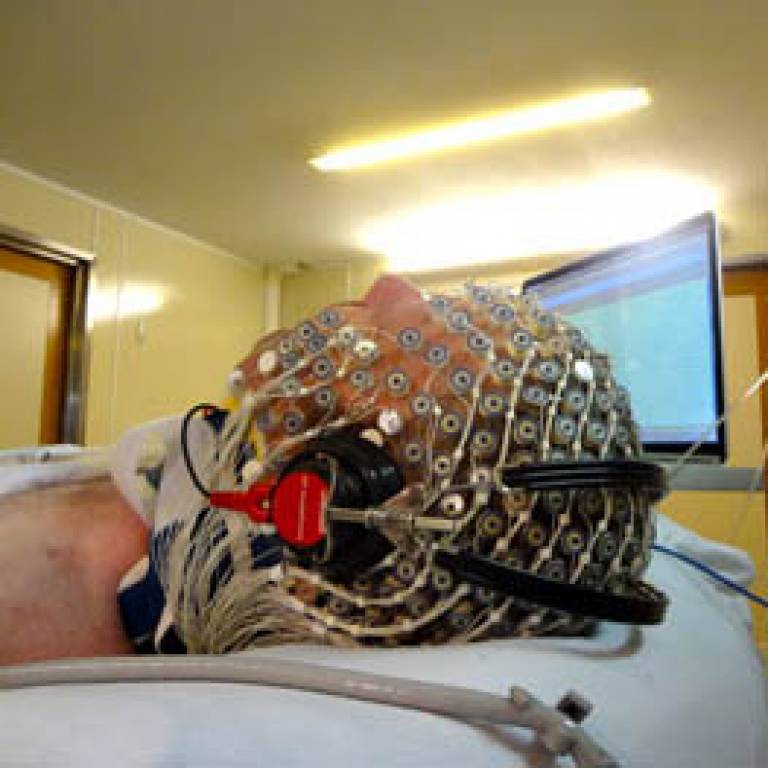'Consciousness connections' revealed in coma brains
13 May 2011
A new test of consciousness which could be helpful in the diagnosis of coma patients has been identified in new research led by scientists from the University of Liège and UCL.

Recent studies have shown that patients with severe brain damage who show little outward signs of perception or understanding may have a certain degree of pain experience and awareness. New methods of measuring awareness could help doctors better predict the likelihood of recovery and give families an indication on whether their loved one is aware of their presence.
In the study, published today in the journal Science, the team measured the electrical response to auditory stimulation by means of high-density electroencephalography (EEG). Using a sophisticated mathematical model they identified a neural signature of consciousness in healthy volunteers and in patients with "minimal consciousness" but not in unresponsive so-called "vegetative" patients. The study helps unravel how subjective consciousness arises from the physical activity of trillions of brain connections.
The researchers gathered EEG recordings in 22 healthy volunteers and 21 patients with severe brain damage. Eight patients were "vegetative" and 13 were "minimally conscious", a condition in which patients sometimes show deliberate movements such as eye-tracking of a person or orientation of painful stimuli.
The researchers made EEG measurements while subjects listened to a series of simple tones. Previous studies had shown that the brain's electrical response changes when the frequency of the tones changes. These brain responses disappear during sleep and under anaesthesia, suggesting that this may be an indicator of consciousness. Dr. Boly and colleagues found that unconscious "vegetative" patients showed only a transient response of less than one tenth of one second. Importantly, this is associated with a disrupted connection linking the frontal and auditory cortex, which is preserved in minimally conscious patients and in healthy people.
The University of Liège researchers, led by Dr. Melanie Boly and Dr. Steven Laureys, worked with Professor Karl Friston, Dr. Marta Garrido, and Dr. Vladimir Litvak at UCL on the development of mathematical models to identify the activated cerebral network and its "consciousness connections". Previous studies of the Liege team had already shown a widespread "consciousness network" encompassing the fronto-parietal gray matter and pointed to the crucial role of this network's connectivity on communication.
This study suggests that this network's 'feedback loops' or 'top-down' connections are necessary for conscious experience and the team are now examining the prognostic value of this new technique.
Image: More than 250 sensors measure the electrical response of the brain to auditory stimuli in coma patients and allow physicians to detect signs of consciousness. ©comascience.org
 Close
Close

